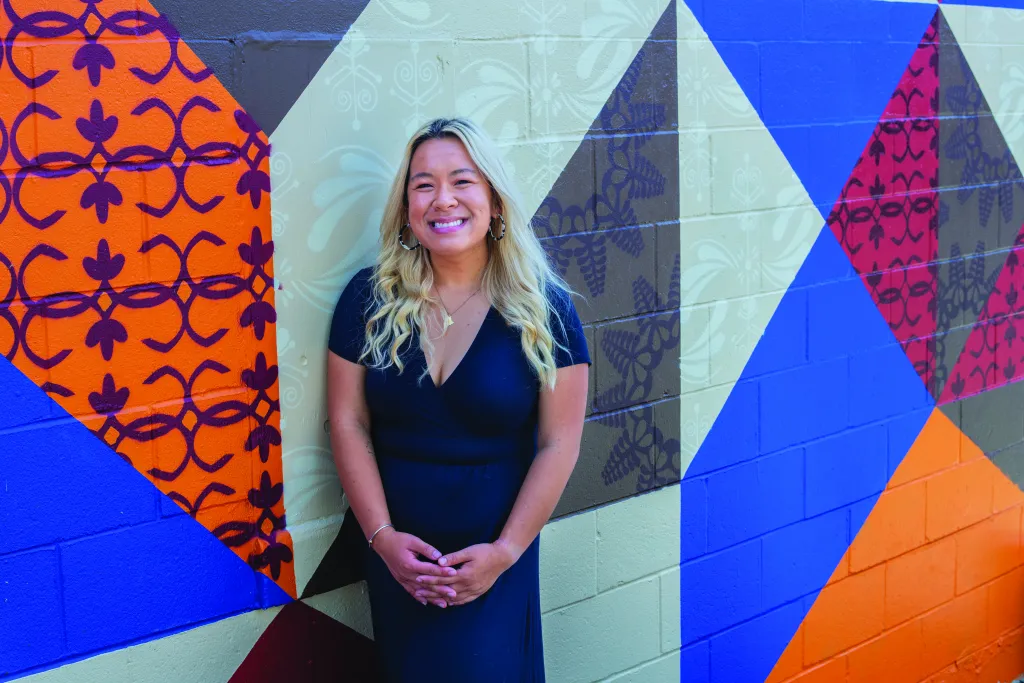Something that I have personally witnessed and heard countless times from current students, alumni, faculty, and staff is that while UNE feels like a small college, we have a large-scale impact in the communities we serve. Growing up as a first-generation Vietnamese American in Portland, I hope to continue purposefully working with the BIPOC [Black, Indigenous, People of Color] community here in Maine. Prior to even applying, I thought about how different cultures think about access to care. There is really no word for “mental illness” in Vietnamese; all we have is “bênh tâm thâ`n,” which roughly translates to “madness” and carries a lot of shame. I want to give others more.
That is why I am on the clinical track in the M.S.W. program here at UNE — nationally, and definitely here in our own state, there isn’t enough representation of people of color in the mental health space.

A note regarding the photo: Ryan Adams (IG: @ryanwritesonthings) is a Black artist, and some of his work is featured in the neighborhood I grew up in. Photographer Holly Haywood and I chose to shoot at Root Wild Kombuchery on Washington Avenue, blocks from where my mom opened Portland’s first Vietnamese store and restaurant in the late 1970s, and now home to one of Ryan’s murals — a collaboration between him and Rachel Gloria Adams for Indigo Arts Alliance, an organization that embodies a Black-led, multiracial approach to the rich intersections of citizenship, community-building, and creativity.
Upon graduation, I will join the ranks of the less than 5% of mental health professionals practicing nationally who are people of color. This is something I can do for my community — get my training at UNE and then serve historically marginalized groups.
Bonus Content: Meet Belle
Hear Belle talk about interprofessional collaboration, UNE's welcoming community, and why she chose social work.
